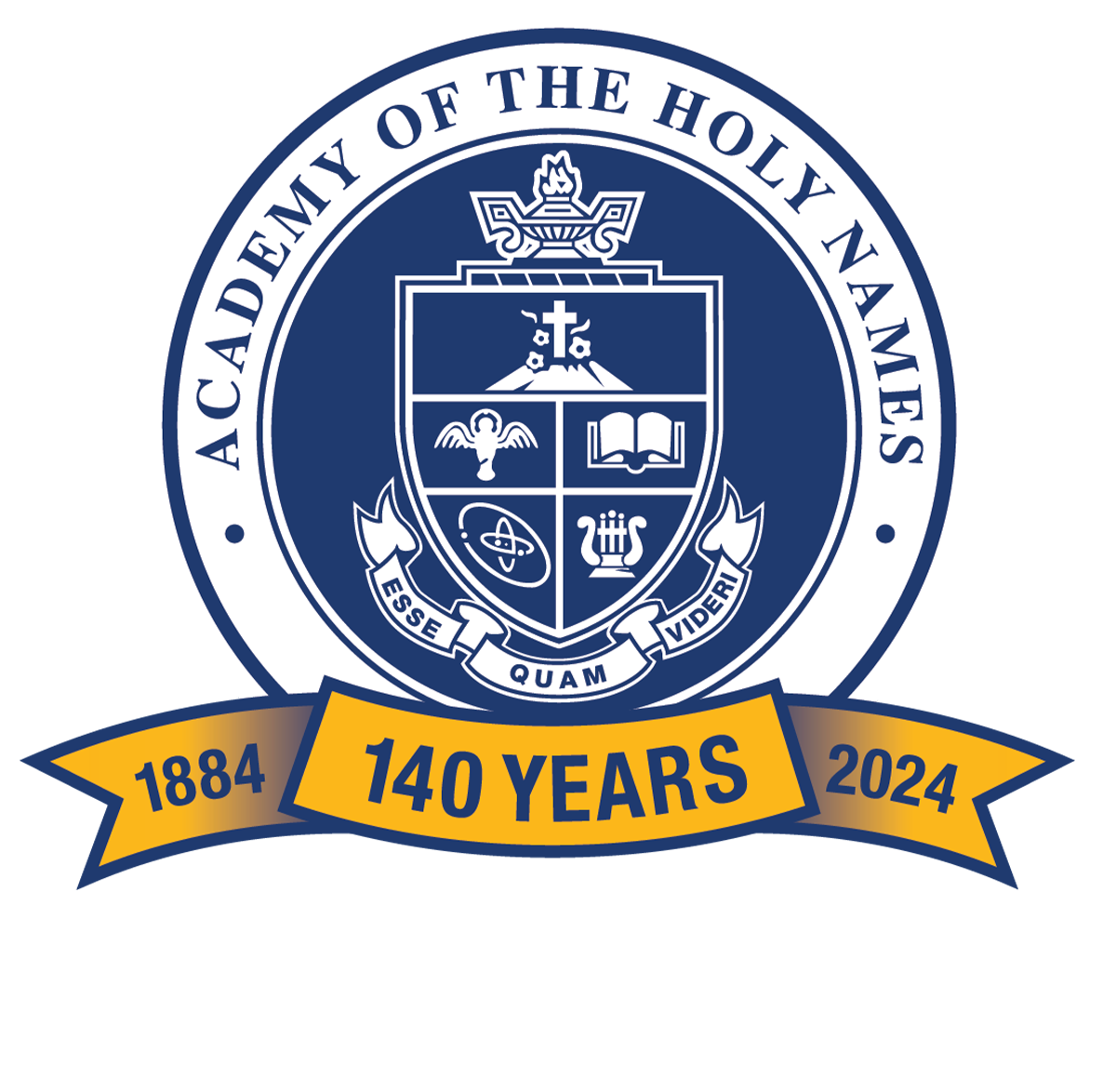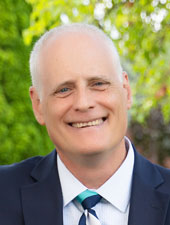I take this opportunity, two weeks into the fall term, to share my educational philosophy and the manner in which Academy of the Holy Names exemplifies it.
A Catholic liberal arts education emphasizes broad knowledge, academic skills, and the discernment of values. The principal goal of such an education is to prepare students for a life of purpose and fulfillment that contributes to building the Kingdom of God. The beneficiary of such an education appreciates beauty, truth, and goodness. He or she glories in the wonder of the world and human creativity, seeks clarity and wisdom, and loves virtue. As scholars in the liberal arts tradition, Academy of the Holy Names students delight in and wrestle with the great works of literature, history, theology, science, and art that have enduring relevance and provide pleasure and insight into the human experience, whether those great works were crafted three millennia ago or in the present century. Our cultural legacy is not encased like a bee in amber but is a living part of a continuum of human endeavor. A worthy liberal arts education is the product of a dynamic culture that embraces the spirit of inquiry and exploration.
Academy of the Holy Names fosters such a culture by encouraging critical thinking, questioning, and searching. It supports students as they explore human ideas and conceptual frameworks and begin to formulate their own. The early years of their journey were marked by the safe environment of a single classroom. At Holy Names, that model gives way to the structure of distinct disciplines which nurture their efforts to understand themselves and the world around them. Among other contributions to a well-rounded education, the humanities foster compassion, an appreciation for culture, and communication skills; the sciences and social sciences teach methods of observation and critical thinking; mathematics and computer science teach logic and problem-solving; and the arts develop creativity and passion. While a liberal arts education is frequently unsatisfied with the division of the universe and human experience into distinct fields of study, it finds the structure of disciplines brings clarity, insight, and further inquiry. The student educated in the Christian liberal arts tradition is naturally compelled and urged on by her mentors to see the connections that exist across disciplines, to see God in all things, and to translate their learning into service to God and others.
Teachers convey the spirit of the liberal arts’ quest in their instruction and more importantly in their modeling. Faculty members of liberal arts schools are called to be both knowledgeable in their discipline and to seek understanding beyond it. They recognize that learning is a process of discovery and that they play an important role in inspiring their students to learn more about themselves and the world around them. Masters of the teaching craft practice a pedagogy that balances explanation with dialogue and favors conversation over lecture. They introduce their students to methods of thinking and analysis, demonstrate skills, and impart knowledge, while helping their students achieve mastery through discussion, debate, research, and independent study. Teachers also know the context in which their students live. They understand the social environment and developmental stages of their students, so they design meaningful lessons characterized by care for and insight into the unique individual sitting before them. The relationship between teacher and student may take a variety of forms based on individual personalities but is always characterized by care for the person and eagerness to see them succeed. The trust that arises in such an environment encourages experimentation and academic risk-taking. We expect teachers to have confidence in their own identity yet be open to growth. In this way they model for their students’ traits of self-awareness and a yearning for greater self-discovery and accomplishment. Through a liberal arts education students come to value the process of becoming.
Becoming who we are and who we wish to be is a cyclical process requiring us to reflect on our experiences in order to inform our actions. It is by this process we become wise. The wise individual values beauty, truth, and virtue. The liberal arts teach discernment and promote wisdom by encouraging reflection that informs further action. It is a cycle that enriches lives by encouraging active engagement in the world. It is a cycle that must be consciously incorporated into lessons, the broader curriculum, and institutional decision-making.
The liberal arts have often been practiced or at least dismissed as a purely intellectual endeavor. Holy Names students and graduates see the connection between academic study and the needs of the world around them. As Cicero wrote, “Non nobis solum nati sumus” – We are not born for ourselves alone. Students must recognize that the stories they have read and the theorems they have mastered have real world application. Ultimately, they must use their education to build a better world. Holy Names’ students and graduates see themselves as members of a human community and take responsibility for its future. If a liberal arts education is to truly liberate us as people, it must address the evolving human condition.
One area in which this applies is the challenge that arises by our increasingly technological world. Ever since Thomas Friedman published his influential book The World is Flat, many have preached the teaching of 21st century skills. While I agree that we must be competent in the use of and in many cases developers of technology, there is no substitute for the creativity, analytical thinking, and adaptability that a liberal arts education can provide for weathering the complexities of the modern world. Furthermore, a liberal arts education provides the moral compass necessary for our society to navigate the uncharted ethical waters that are a result of the technological deluge.
A particularly salient consequence of a flat world is that we are culturally interconnected. The insularism that characterized independent school culture for centuries ought to be a thing of the past, but the public perception, and sometimes the reality, is that it endures. Holy Names embraces the open-mindedness and inclusiveness that lies at the heart of a liberal arts education while continuing to articulate our distinctiveness.
When I consider what characterizes a good school, I force myself to set aside the beauty of its buildings and natural surroundings and the efficiency and cleanliness of the physical plant, though such qualities aid the institution in fulfilling its purpose. When I evaluate a school I look for its adherence to its mission and the interactions between faculty and students. Do I see compassion, respect, and high expectations? Do I see people grappling with ideas? Do I see joy? Do I see faith in action? These are the traits of a great school. I see these in Academy of the Holy Names where our motto, Esse quam videri, inspires us to live lives of virtue and purpose.

